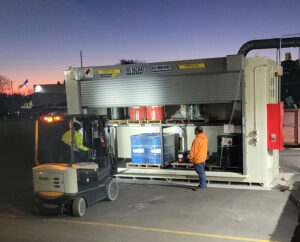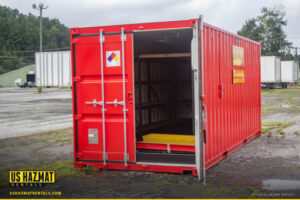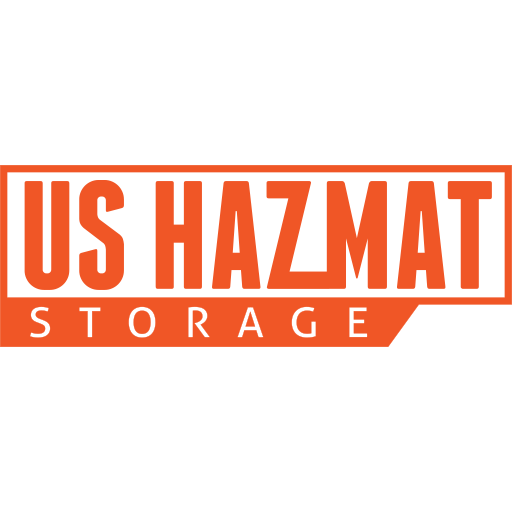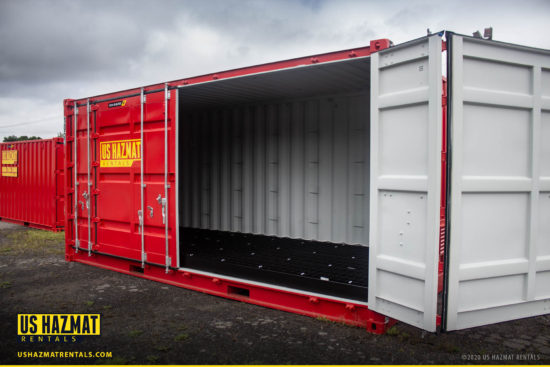Chemical storage regulations engender resilient operations and protect employees while ensuring workplace safety without compromising quality control. Although workplace accidents constitute most industrial safety citations, countless unavoidable charges stem from lackluster chemical storage. While destabilizing deregulations and oversight send conflicting messages to companies cutting through the relentless tape of bureaucracy, following simple yet often ignored hazmat precautions invariably leads to injury and property destruction. Chemical safety is never a superfluous expenditure. Investing in compliant safety and storage practices yields significant dividends for worker morale and efficient manufacturing that doesn’t halt when an OSHA inspector visits the workplace. Skirting chemical storage regulations results in significant civil penalties, frequent employee turnover, and negative publicity. US Hazmat Storage will safeguard your facility with compliant fire-rated or non-fire-rated chemical warehouses and storage lockers for every incompatible hazmat classification.
An English chemical manufacturing is feeling the burn of justice following two uncontrolled acid releases. The company pleaded guilty to negligently releasing hydrogen chloride gas that threatened local schools. Another uncontrolled release, this time, sulphuric acid, occurred in August 2020 when a compromised pipe pinned the chemical facility under heightened oversight and severe admonishment. English authorities fined the company 2.5 million pounds, or $3.2 million, an insurmountable figure for most companies operating with narrowed margins. US Hazmat Storage’s chemical storage lockers can prevent toxic releases from permeating the factory floor and surrounding environment. We engineer each hazmat building with superior sump containment, preventing untimely spills and fires from spreading while protecting the bottom line.
What are the Four General Rules for Storing Chemicals?

Employees and engineers should store hazardous materials in a centralized, safe, and segregated storage location, like a warehouse, locker, or cordoned-off area. All shelves containing dangerous materials should be stable, level, and removed from egresses and walkways. Workers should keep storage container lids and the canisters stored within a reinforced steel locker when not applied or used. Furthermore, employees should exercise vigilance in never storing incompatible materials together or near sparking work stations and extremely hot or cold areas as this can trigger flashovers and chemical degradation.
What is the NFPA standard for Chemical Storage?
NFPA 30 is the standard Flammable and Combustible Liquids (storage) code. This expansive standard places emphasis and requirements for handling, storing, dispensing, transporting, and using dangerous chemicals. NFPA includes three standard classifications for flammable liquids based on flash point.
- NFPA 30 Class I (flammable – flash point <100°F)
- NFPA 30 Class II (combustible – flash point 100°F up to 140°F)
- Class III (combustible – flash point 140°F and higher)
Manufacturers should reference NFPA 30 when handling and storing dangerous chemicals in conjunction with OSHA regulations. NFPA 30 includes a system of classifying and categorizing flammable liquids based on their physical properties and propensities to cause harm and environmental contamination.
Common Flammable Liquids
- Diesel
- Gasoline
- Diethyl Ether
- Kerosene
- Acetone
- Hydraulic fluids
- Oil
- Benzene
NFPA 30 flammable liquids standard also guides compliant chemical storage. OSHA says that no more than 25 gallons of flammable materials should be stored outside a designated chemical storage area. We engineer each fire-rated chemical storage locker to the appropriate sizing and materials for continuous compliant protection. Each storage locker comes with a bottom-affixed sump containment system that safely collects spilled contents from breached containers, allowing the dangerous substance to fall harmless through steel-grated flooring into the sump until safe extraction. Specified roll-up or wide-swinging doors allow for easy storage and retrieval without impeding workflows.

What are the OSHA Requirements for Chemical Storage?
OSHA regulations dictate that employers must keep all storage areas free from clutter, explosives, and flammable conditions. Inventory specialists should also clearly label each chemical drum, tote, or container with clearly visible hazard diagrams and warning language for accurate and quick referencing. Stored materials must also be kept at least six feet from hoist ways and 10 feet from exterior walls. Moreover, employee should never store incompatible materials together.
What Types of Chemicals Cannot be Stored Together?
Production specialists should never store flammable and oxidizing agents together or acids with bases and corrosives with flammables. Oxidizers and flammables are also highly incompatible as they can easily ignite. Organic acids should also be kept separate from inorganic acids. Companies should consult the appropriate Material Safety Data Sheet made available from the manufacturer for each hazardous materials. An MSDS provides detailed information about a chemical’s potential hazards, physical properties, incompatible materials listing, safe handling procedures, appropriate fire suppressants for inadvertent flames, and general storage guidelines. Furthermore, each MSDS streamlines product and employee safety, storage, and application.
When a Chemical is at a Workplace How Must Employers Label Containers?
Employers must provide labels for each chemical containing the product identifier, signal word, hazard statement, precautionary statement, and pictograms. Our OSHA compliant chemical storage warehouses and storage lockers complement proper chemical storage, handling, inventorying, and product management. We fabricate each hazmat warehouse to your company’s operational and sizing needs. Our knowledgeable building advisors also provide astute industry insight on how to properly store dangerous chemicals and offer affordable solutions for every manufacturing sector.


